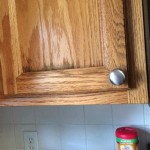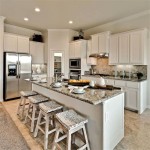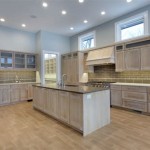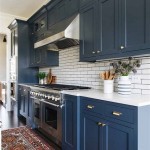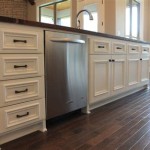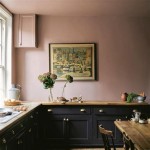Kitchen Cabinet End Shelf Unit: Enhancing Functionality and Aesthetics
The kitchen cabinet end shelf unit is a valuable addition to any kitchen design, serving a dual purpose of optimizing storage space and augmenting the visual appeal of cabinetry. This element, typically installed at the exposed end of a run of cabinets, provides readily accessible storage and a finished, polished look to the kitchen layout. End shelf units represent a practical solution for kitchens seeking to maximize every available inch of space while simultaneously elevating the overall design aesthetic.
The design and implementation of a kitchen cabinet end shelf unit require careful consideration of several factors, including the kitchen's existing design, the available space, and the intended function of the shelving. This article will explore the benefits, design considerations, installation nuances, and diverse applications of kitchen cabinet end shelf units, providing a comprehensive understanding of their role in modern kitchen design.
Key Point 1: Benefits of Installing a Kitchen Cabinet End Shelf Unit
The incorporation of a kitchen cabinet end shelf unit offers a multitude of advantages, addressing both practical storage needs and aesthetic enhancements. These benefits contribute significantly to the overall functionality and visual appeal of the kitchen.
One primary benefit lies in its accessibility. End shelf units provide open storage that is easily reachable, making them ideal for frequently used items. These items, such as cookbooks, spices, or decorative items, can be placed within easy reach, streamlining the cooking process and enhancing convenience. This accessibility contrasts with enclosed cabinets, which may require opening doors or drawers to retrieve items.
Furthermore, end shelf units contribute to decluttering the kitchen countertop. By providing dedicated shelving for common items, the unit helps to minimize countertop clutter, creating a more organized and visually appealing workspace. This is particularly beneficial in smaller kitchens where countertop space is limited. The ability to display items vertically also frees up valuable horizontal surface area.
Aesthetically, end shelf units can significantly enhance the visual flow of the kitchen. They provide a finished look to the cabinetry run, concealing otherwise exposed cabinet sides. This creates a seamless transition and contributes to a more refined and professional appearance. The shelving can be used to display decorative items, plants, or colorful kitchenware, adding personality and visual interest to the space. Customization options, such as matching the shelving to the cabinet finish or selecting contrasting materials, further enhance design flexibility.
Finally, end shelf units can increase the overall storage capacity of the kitchen. While they may not offer the same volume as enclosed cabinets, they provide valuable supplementary storage for items that are frequently used or those that are better suited for open display. This increased storage can be particularly useful in kitchens that lack sufficient cabinet space.
Key Point 2: Design Considerations and Material Choices
Designing a kitchen cabinet end shelf unit requires careful consideration of several factors to ensure it seamlessly integrates with the existing kitchen design and fulfills its intended purpose. These design considerations encompass dimensions, style, material selection, and functionality.
The dimensions of the end shelf unit are crucial for optimal space utilization and aesthetic harmony. The height, width, and depth of the shelving must be proportionate to the adjacent cabinets and the overall size of the kitchen. Overly large shelving can appear bulky and intrusive, while shelving that is too small may not provide adequate storage. Careful measurement and planning are essential to ensure a proper fit.
The style of the end shelf unit should complement the existing kitchen cabinetry. Whether the kitchen features a traditional, modern, or transitional design, the shelving should reflect the same style elements. This includes matching the cabinet door style, hardware, and finish. Consistency in style creates a cohesive and visually appealing design.
Material selection plays a significant role in both the durability and aesthetics of the end shelf unit. Common materials include solid wood, plywood, MDF (medium-density fiberboard), and laminate. Solid wood offers superior durability and a classic look, but it can be more expensive. Plywood provides a good balance of strength and affordability. MDF is a cost-effective option that is suitable for painting or laminating. Laminate offers a durable and easy-to-clean surface in a variety of colors and patterns.
The number of shelves and their spacing should be determined based on the intended use of the end shelf unit. Consider the size and type of items that will be stored on the shelving. Taller items, such as cookbooks or decorative vases, will require more vertical space between shelves. Adjustable shelves offer flexibility to accommodate items of varying heights. The depth of the shelves should also be considered to ensure adequate support for the items being stored.
The finish of the end shelf unit should match or complement the existing cabinetry. This includes matching the paint color, stain, or laminate pattern. A consistent finish creates a seamless transition and enhances the overall aesthetic appeal of the kitchen. Consider adding decorative elements, such as trim, molding, or decorative brackets, to further enhance the style of the shelving.
Key Point 3: Installation and Practical Applications
The successful installation of a kitchen cabinet end shelf unit is essential for its functionality and longevity. Proper installation ensures that the shelving is securely attached, level, and visually appealing. Attention to detail during the installation process is crucial.
Prior to installation, carefully measure the available space and mark the location for the shelving. Ensure that the shelving is properly aligned with the adjacent cabinets. Use a level to ensure that the shelving is installed straight and plumb. Secure the shelving to the cabinet using screws or other appropriate fasteners. Reinforcement may be necessary for heavier items or if the cabinet side is thin.
End shelf units can be used in a variety of practical applications throughout the kitchen. In addition to storing cookbooks, spices, and decorative items, they can also be used to store frequently used appliances, such as blenders or toasters. Open shelving provides easy access to these items, streamlining the cooking process.
In smaller kitchens, end shelf units can be used to create additional storage space for pantry items, such as canned goods, dry goods, or bottles. The open shelving allows for easy visibility and access to these items. Consider using baskets or bins to organize smaller items and prevent them from falling off the shelves.
End shelf units can also be used to display plants or herbs, adding a touch of greenery to the kitchen. Plants can help to purify the air and create a more inviting atmosphere. Ensure that the shelving is sturdy enough to support the weight of the plants and pots.
Furthermore, end shelf units can be incorporated into kitchen islands to provide additional storage and display space. This can be particularly useful for storing cookbooks, serving dishes, or decorative items. Consider adding a backsplash to the island end to protect the cabinetry from spills and splashes.
Regular maintenance is essential to keep the end shelf unit in good condition. Clean the shelving regularly with a damp cloth to remove dust and dirt. Avoid using abrasive cleaners, which can damage the finish. Inspect the shelving periodically for any signs of damage, such as cracks or warping. Repair any damage promptly to prevent further deterioration.
By carefully considering design considerations, material choices, and installation nuances, a kitchen cabinet end shelf unit can be effectively integrated into a kitchen design, enhancing both its functionality and aesthetic appeal. This addition allows for optimized storage, convenient access to frequently used items, and a polished, finished look to the cabinetry.

Like The Open Shelves At End Of Cabinets Corner Kitchen Cabinet Wall

Tall End Quadrant Units Kitchen Diy Kitchens

20 Ideas For Using Wasted Space On The Ends Of Kitchen Cabinets

End Of Cabinet Corner Shelves Coming Out Our Kitchen Home

Bella Base End Shelf Unit Right Hand Kitchen Door Hub

Wall End Shelf Unit Bella

20 Ideas For Using Wasted Space On The Ends Of Kitchen Cabinets

Open Shelf End Wall Cabinet Ana White

20 Ideas For Using Wasted Space On The Ends Of Kitchen Cabinets

Open End Wall Shelf For Our Kitchen Door Replacements
Related Posts



